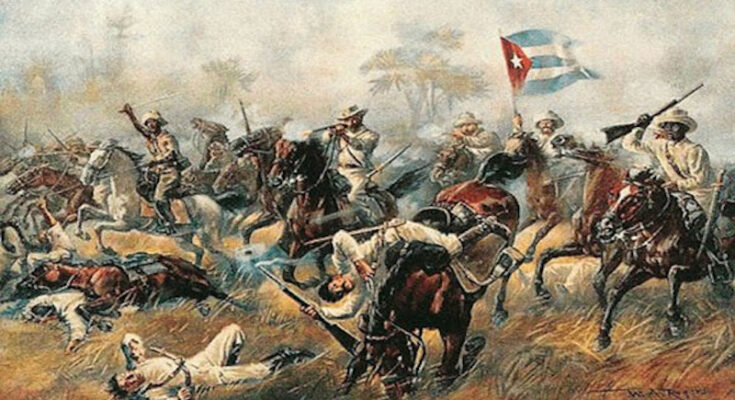The Little War was an attempt to continue fighting for the independence of Cuba, after the Pact of Zanjón, which stopped the war under an agreement with part of the uprising forces. But that agreement did not guaranteed the independence of Cuba and the demanded emancipation either.
The Zanjón meant the claudication of the Cuban arms, since it conditioned a peace without independence. However, two later events would confirm that the fighting spirit that had taken the Cubans to the manigua as of October 10, 1868 was still alive and beating.
The first was the historic Baraguá Protest, led by Antonio Maceo on March 15, 1878, barely a month and five days after the agreement reached in the shameful Zanjón Agreement. Meanwhile, the second took place one year and six months after what was approved in that place in Camagüey: the famous Little War, so known in our historiography because of its relatively short extension, if we compare it with the ten years of struggle in the so-called Great War or Ten Years’ War.
Little War and Baraguá Protest
We can affirm that the Little War was a result of Baraguá Protest, and its continuity with weapons in hand. Baraguá closed a revolutionary cycle that from August 24, 1879, would enter a new one with the armed uprising of several military chiefs of the East of Cuba. Conceptually it can be considered a milestone in the 150 years of struggle of the Cuban people for their independence, and although it did not reach a national character, limiting its actions to the regions of Oriente and Las Villas, and mistakes were made that ruined the libertarian ideal, it proved the worth of the Cubans and their willingness to be free at the cost of the greatest sacrifices.
Mambi leaders such as Guillermon Moncada, Jose and Rafael Maceo, brothers of General Antonio, exiled in Jamaica, and Quintin Bandera responded to the call of the Homeland in the legendary Oriente. While in Las Villas, Serafín Sánchez, Francisco Carrillo, Ángel Maestre and Emilio Núñez, who was the last of the leaders to lay down his arms on December 3, 1880, stood out.
The Chiquita War was marked by serious organizational errors that deprived it from the beginning of a unit of command and of the presence of a military chief of high rank to lead it inside the island, since the possibility that it was Antonio Maceo, the oriental leader and hero of Baraguá, was prevented by the campaign of “war of races” that Spain launched and in which Calixto García, who directed the Revolutionary Committee and pulled the strings of the conspiracy, fell.
However, an element to highlight whenever this moment of our libertarian deeds is mentioned is related to our National Hero. The Little War served to make José Martí known in the political life, who -deported to Spain for his conspiratorial labors- would end up being the second of General Calixto García in the Cuban Revolutionary Committee.
For Martí it meant the indispensable experience to learn from mistakes and to make himself known in emigration. It was the school that would later allow him to unite the “new pines” with the old ones to jointly carry out the 95 or Necessary War, as the Apostle himself called it.
For the Master, the Chiquita War gave rise to rigorous studies of the causes of failure, in which the unity factor would be a key element. Not for nothing, in the following years of Tregua Fecunda or Reposo Turbulento he would dedicate himself to unite the diverse and the dispersed and to weave the sure networks of the conspiracy, being the foundation of the Partido Revolucionario Cubano (PRC), in 1892, his unitary and anti-imperialist summit work.

